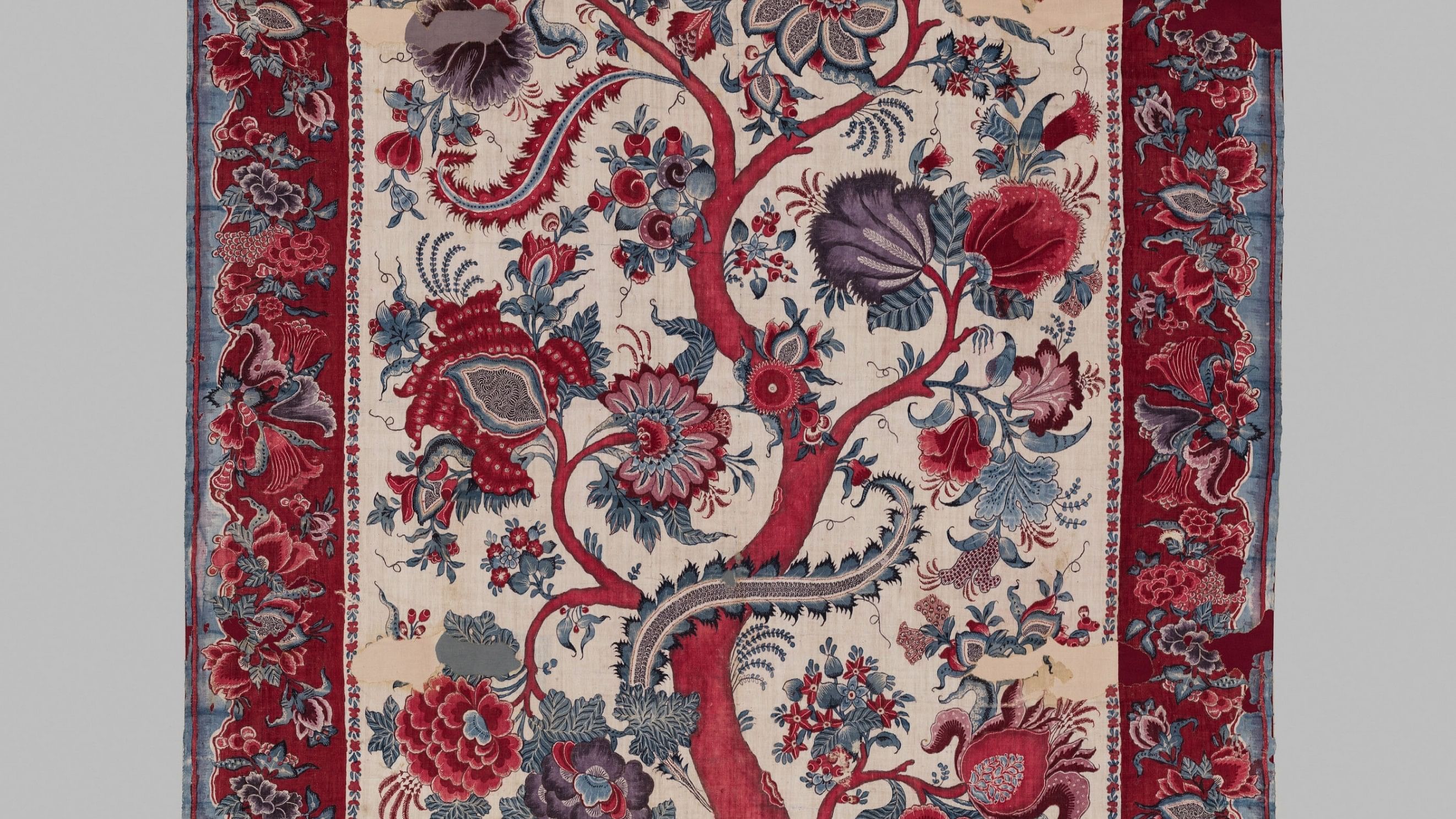
Palampore in cotton, Coromandel coast, India, 18th century.
Pic courtesy: Met Museum
The Tree of Life is a motif that traverses geographies, cultures and religions to symbolise creation, life and immortality. The motif draws from the symbolism of the primordial tree as rendered in the cultures of Asia, Africa, Europe and Oceania, depicting an upright tree with distinctive branches shooting off from it, sometimes bare and sometimes laden with leaves, fruits and flowers. The tree has deep roots penetrating the earth that draw out life-sustaining fluid, enabling its abundant branches to reach high into the sky, thus representing the bridging of heaven and earth.
The Tree of Life symbol was used as a decorative biomorphic motif as early as the mid-16th century. The motif can be seen in the celebrated jaali (lattice) work of the Sidi Saiyyed Mosque in Ahmedabad, Gujarat. The symbol also appears on a mirror frame designed in the Mughal court in the 17th century, with the mirror’s jade frame inlaid with gold stems and leaves, buds of rubies, diamonds and emeralds.
While the Tree of Life has been featured across artistic representations in sculpture, architecture, painting and print, it is most vividly depicted in traditional textile designs including kantha embroidery from West Bengal, shawls from Kashmir, phulkari work from Punjab, mirror-work and embroidery from Gujarat and Rajasthan and kasuti embroidery from Karnataka.
The Portuguese, the Dutch and then the British East India Companies traded the fabric and used it in Southeast Asia as currency to exchange spices. Hence, the symbol travelled through the world and took on many variations. For instance, the motif of tumpal — consecutively arranged isosceles triangles on a fabric’s border — is conjectured to have been incorporated to suit the tastes of the Indonesian market. Through the influence of the British East India Company, the symbol was depicted on large cotton hand-painted or block-printed bed coverings known as palampores, which were popular in Europe and North America.
The Tree of Life motifs on palampores resulted from a synthesis of European embroidery, motifs from Chinese porcelain and Persian painting. The scholar Sylvia Houghteling has pointed out that the motifs are representative of the hybrid saz style — decorative imagery that combines floral motifs with forest imagery that depicts demons, with suggestions of “garden splendour, paradisiacal plentitude and impossible fecundity.” The motif continues to remain popular in textile designs and artistic representations and is widely featured in chanderi, jamdani and banarasi weaving.
While Abrahamic religions consider the motif symbolic of the Garden of Eden, Buddhist, Jain, Hindu and Sikh mythologies and sacred texts refer to it as the kalpavriksha, or the wish-granting tree, which represents earthly and cosmic life. The Bodhi tree and the sacred banyan and peepal trees are also considered to be possible antecedents of the motif. Within the tapestry of South Asia’s art history, the Tree of Life motif emerges as a profound symbol — reflecting the interconnectedness of cultures, the flourishing of traditions and the deep roots of artistic heritage.
Arundhati Chauhan, MAP Academy
Discover Indian Art is a monthly column that delves into fascinating stories on art from across the sub-continent, curated by the editors of the MAP Academy. Find them on Instagram as @map_academy